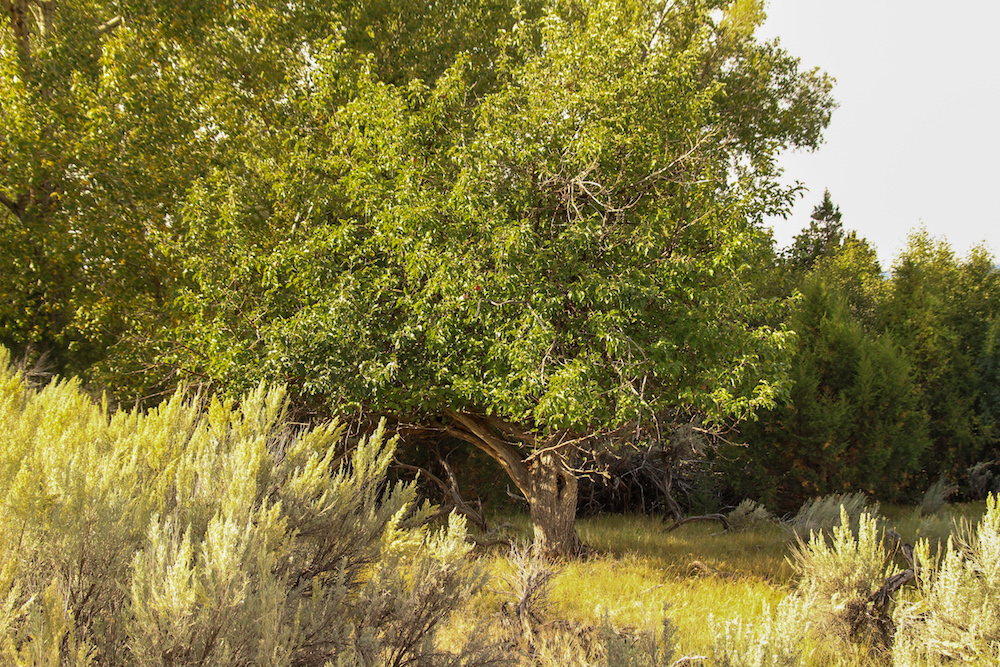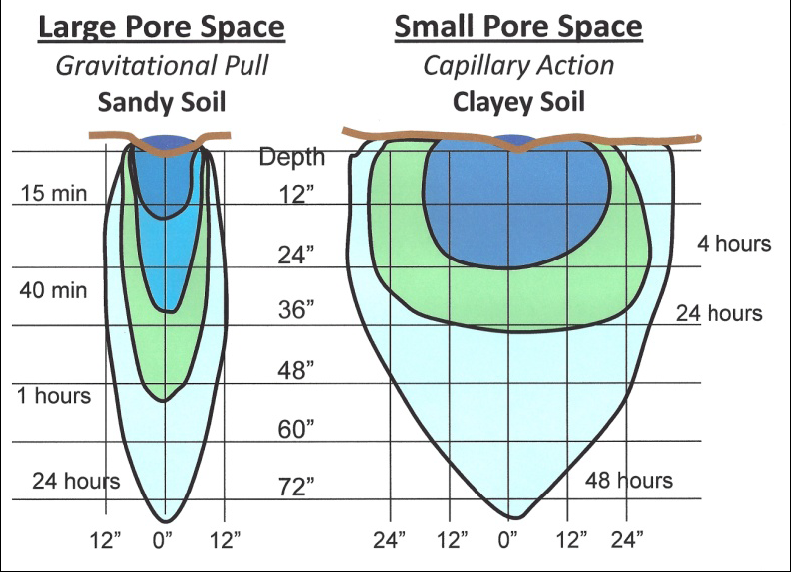Irrigation
 Even relatively isolated heritage trees that have found a way to thrive without water
for 100 years will still benefit from regular irrigation.
Even relatively isolated heritage trees that have found a way to thrive without water
for 100 years will still benefit from regular irrigation.
Irrigation Basics
Early orchardists quickly discovered that water and irrigation were crucial to the success of their orchards. Many of these orchardists came from back East, where humid and rainy summers meant little need to irrigate. But in the arid and semi-arid climates of the Intermountain West, trees left unwatered will die. To properly irrigate your heritage trees, follow these basic rules:
- Your tree needs approximately 10 gallons of water per week per 1 inch of trunk diameter during peak growing season (June to August). This means that a tree with a 12-inch-diameter trunk will need 120 gallons of water per week. That’s a lot of water! This might also be more than you can realistically apply depending on where the tree is located. If so, examine trees for water stress and water as often as you are able. Water-stressed trees are more susceptible to insects and diseases, particularly aphids and scale. Leaves may appear curled and stunted or dry at the margins. You can also examine the soil around the tree to see if it is moist and holding water. Basic rule of thumb: if its dry in that top 12", water your tree.
-
How often and at what rate you irrigate your tree will depend on several factors, including season, weather, soil texture, and the surrounding vegetation. If you have sandy, well-draining soils, you will need to add water more frequently than with clay soils, which require slower, less frequent irrigation events (see figure on right).

This figure demonstrates water penetration over time in sandy vs. clayey soils. Image is published by Brady, N. C., & Weil, R. R. (2002) in "The nature and properties of soils." Upper Saddle River, N.J: Prentice Hall.
- Apply water uniformly around the tree and beyond where the tree canopy ends (drip line).
- Water deeply, at least a couple times per season. Many heritage trees were originally flood-irrigated and have deep roots that don’t necessarily have access to sources of ground water. Watering deep into the soil profile will ensure that the full extent of the root system receives water. Generally however, the feeder roots are often focused in the top 12-18" of soil so keeping this area moist through the growing season is paramount.
- Do not allow irrigation to spray into the canopy of the trees. This rule is especially important during bloom, as moisture on blossoms and foliage can spread common diseases like fire blight and apple scab.
- Drought-stressed trees are also more susceptible to cold injury, so if possible, water your trees heavily before the first hard frost to help protect their roots from winter damage.
Watering in Orchards With Limited Irrigation Access
For some orchards, historic sources of irrigation are no longer available and water must be transported to the trees. For large trees, tanks upwards of 200 gallons can be used to truck water to orchards. For new trees planted to re-establish an orchard, consistent water is even more crucial. Tree watering bags often sold under the trademark TreeGator can provide a slow release water source for trees located in remote areas or where constant care is not an option.

